Psychology > QUESTIONS & ANSWERS > AQA A Level Psychology: Biopsychology Latest 2023 Rated A+ (All)
AQA A Level Psychology: Biopsychology Latest 2023 Rated A+
Document Content and Description Below
AQA A Level Psychology: Biopsychology Latest 2023 Rated A+ Localisation of function ✔✔Theory that states that different areas of the brain are responsible for different behaviours, processes or... activities. Primary motor cortex ✔✔Back of frontal lobe, involved in regulating movement. Primary somatosensory cortex ✔✔Front of both parietal lobes, processes sensory information such as touch. Primary visual cortex ✔✔Occipital lobe, receives and processes visual information. Primary auditory cortex ✔✔Temporal lobe, analyses speech-based information. Wernicke's area ✔✔In the temporal lobe in the left hemisphere for language comprehension. Broca's area ✔✔In the frontal lobe in the left hemisphere, for speech production. Brain scan evidence of localisation. ✔✔Petersen et al (1988) used brain scans to demonstrate how Wernick's area was active during a listening task and Broca's area was active during a reading task = these areas of the brain have different functions. Tulving et al's 1994 study on LTM = semantic and episodic memoried reside in different parts of prefrontal cortex. Evidence against localisation of function ✔✔Lashley removed areas in the cortex in rats learning a maze. No area was proven to be more important than any other for the rats' ability to learn the maze. Alternative to the theory of localisation of function ✔✔The holistic theory of brain function Plasticity ✔✔The brain's tendency to change and adapt as a result of experience. Axon sprouting ✔✔A possible explanation for plasticity: undamaged axons grow new nerve endings to reconnect neurons whose links were injured or severed. Functional recovery. ✔✔An outcome of plasticity: following damage through trauma, the brain's ability to redistribute/transfer functions to undamaged areas. Evidence for plasticity ✔✔Maguire found significantly more grey matter in posterior hippocampi of taxi drivers than control group, which plays a role in human spatial memory and navigational skills. Central nervous system (CNS)? ✔✔Consists of brain and spinal cord Peripheral nervous system (PNS)? ✔✔Sends info to CNS from outside world, transmitting messages from CNS to muscles and bodily glands. Lateralisation. ✔✔Certain mental processes and behaviours are controlled or dominated by one hemisphere rather than the other (as in the example of language). Corpus callosum ✔✔A band of neural fibres that connects the left and right hemispheres of the brain. Split-brain studies. ✔✔Corpus callosum cut in patients with severe epilepsy, allowing researchers to investigate the extent to which brain function is lateralised. Split brain patients responding to image in the right visual field= ✔✔Can name the image verbally Split brain patients responding to image in the left visual field= ✔✔Can select a matching object from a selection of different objects using their left hand. Evaluation of split brain research ✔✔Small samples used fMRI ✔✔Measures brain activity in specific areas by detecting associated changes in blood flow. EEG ✔✔A record of the brain wave patterns produced by millions of neurons, producing characteristic patterns. ERPs ✔✔Isolating specific responses of neurons to specific stimuli or tasks. Post mortem examinations ✔✔Correlating behaviours before death with brain structures after death. Circadian rhythms. ✔✔Have cycles that generally occur once every 24hrs. Infradian rhythms ✔✔Have cycles that occur less than once every day. Ultradian rhythms ✔✔Have cycles that occur more than once every 24 hours. Exogenous zeitgebers ✔✔External cues in the environment that entrain our endogenous rhythms. Endogenous pacemakers ✔✔Internal body clocks that regulate many of our biological rhythms. Evaluation of research on circadian rhythms. ✔✔Research has real-world implications of sleep/wake cycles on shift workers. Exogenous cues for circadian rhythms. ✔✔Day light and social cues e.g. meal times, bed times ect. Examples of a circadian rhythm. ✔✔Sleep/wake cycle and body temperature. Suprachiasmatic nucleus (SCN) ✔✔The primary endogenous pacemaker in mammals. Melatonin ✔✔Produced by pineal gland at night, governs sleep/wake cycle. Production inhibited during periods of wakefulness. Light ✔✔A zeitgeber in humans that can reset the main endogenous pacemaker (SCN) and plays a role in the sleep/wake cycle. [Show More]
Last updated: 2 years ago
Preview 1 out of 16 pages
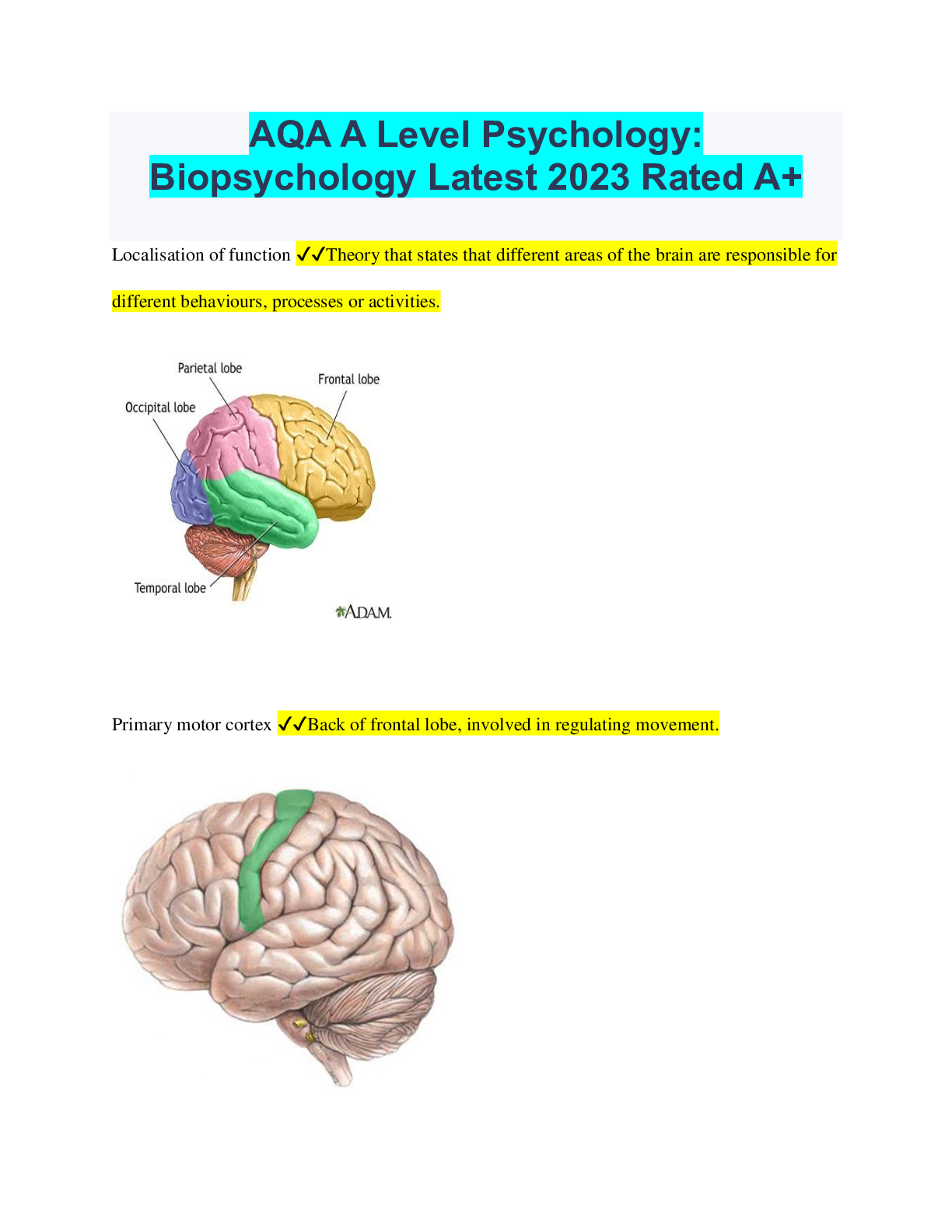
Buy this document to get the full access instantly
Instant Download Access after purchase
Buy NowInstant download
We Accept:

Also available in bundle (1)

AQA A Level Psychology Biopsychology Bundled Exams Questions and Answers Already Graded A
AQA A Level Psychology Biopsychology Bundled Exams Questions and Answers Already Graded A
By Nutmegs 2 years ago
$18
6
Reviews( 0 )
$10.00
Can't find what you want? Try our AI powered Search
Document information
Connected school, study & course
About the document
Uploaded On
May 08, 2023
Number of pages
16
Written in
Additional information
This document has been written for:
Uploaded
May 08, 2023
Downloads
0
Views
105

.png)

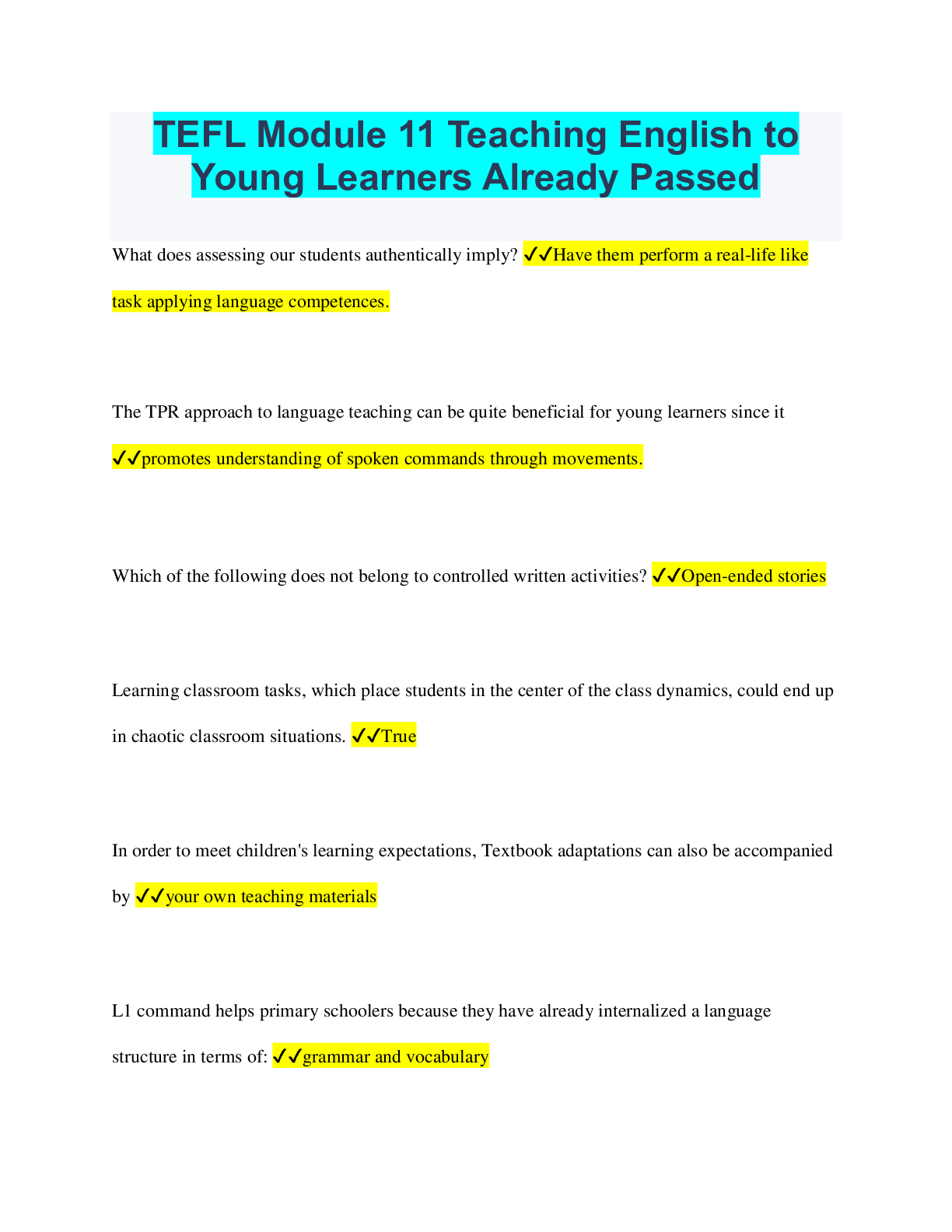
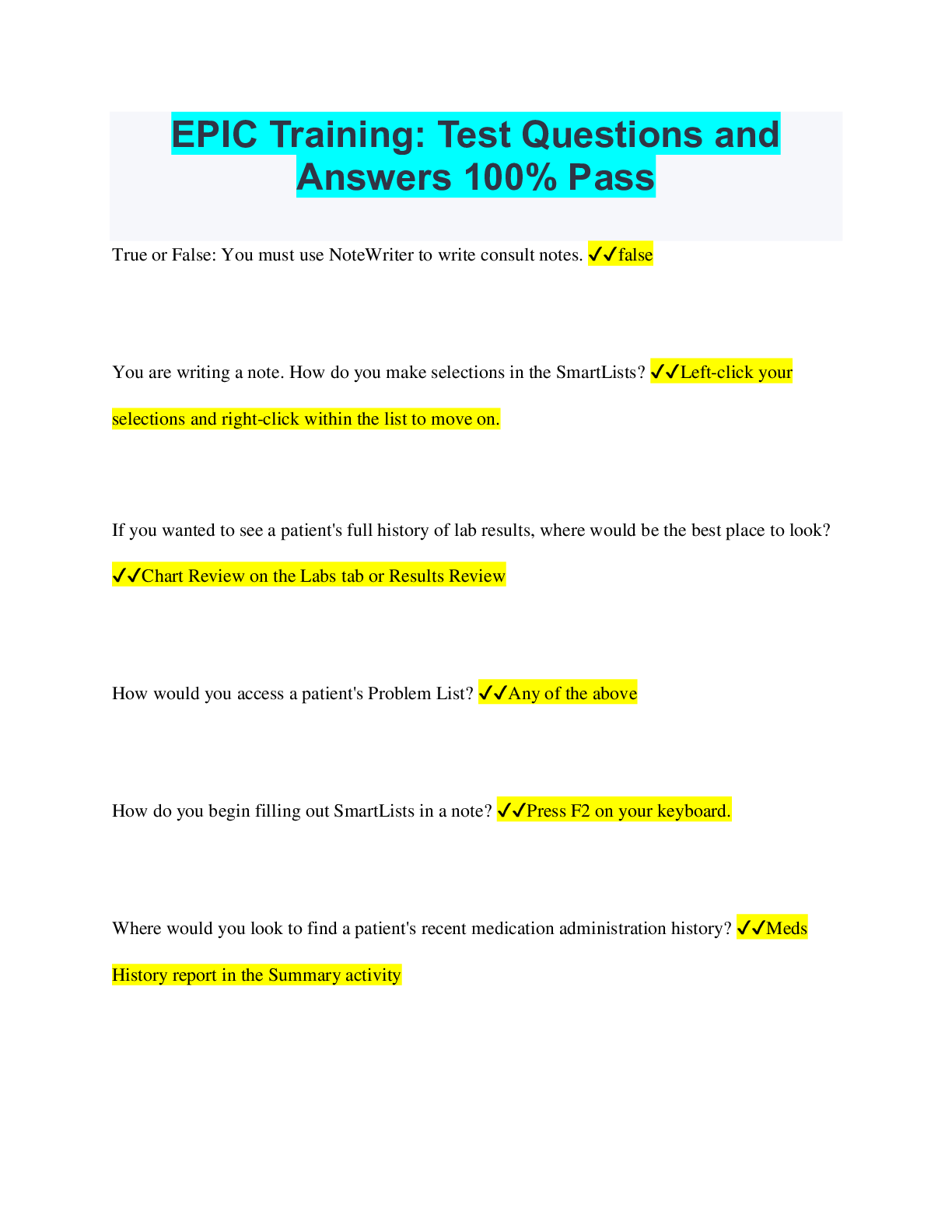
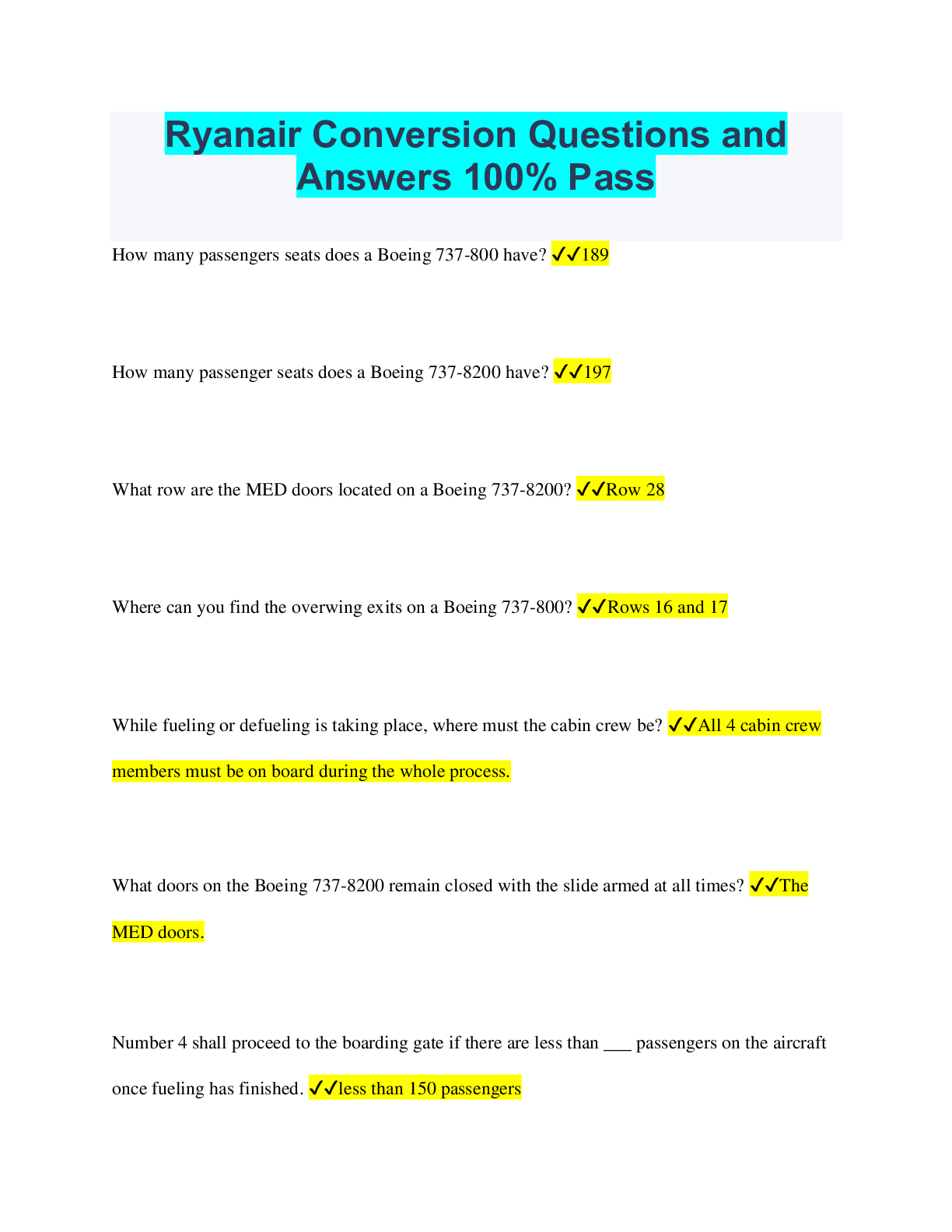
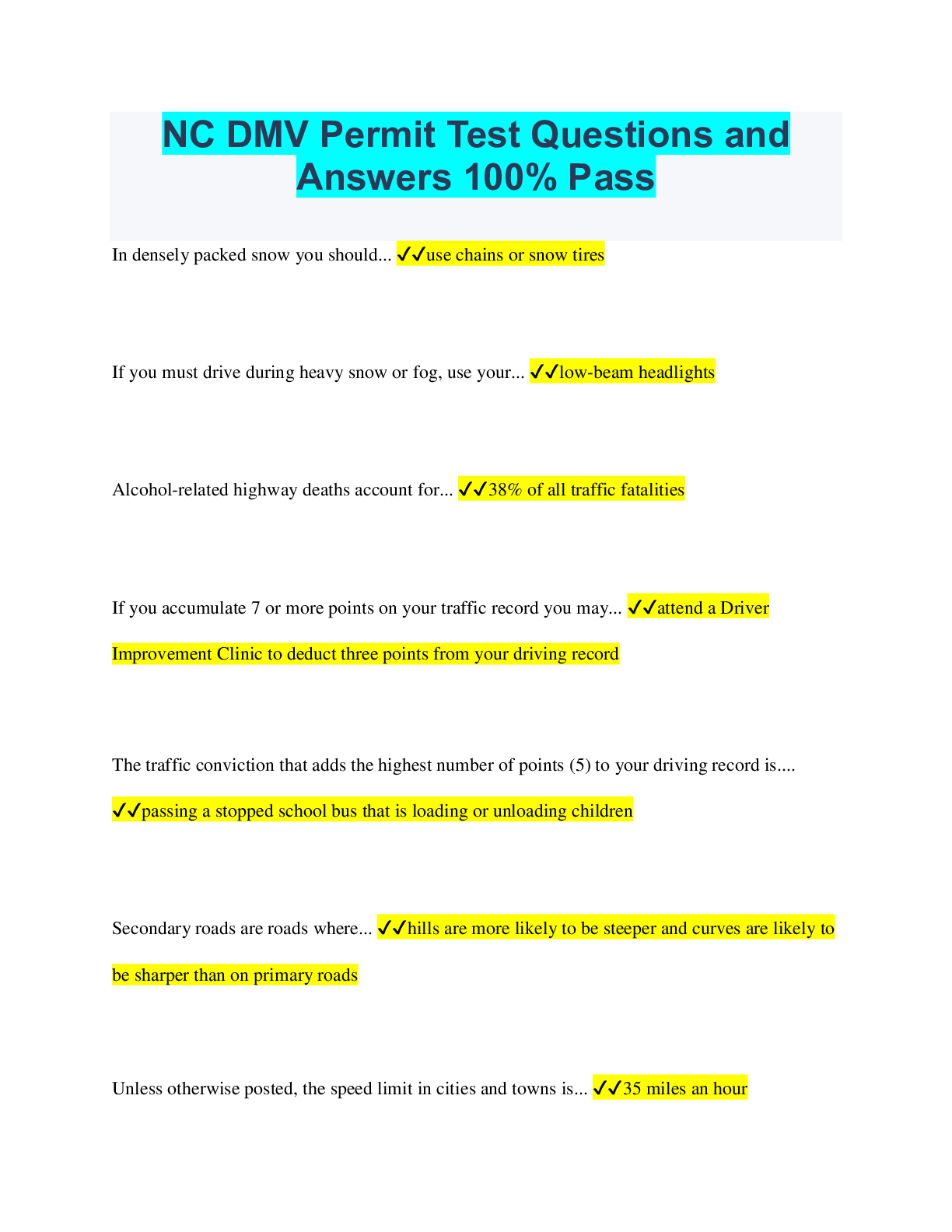

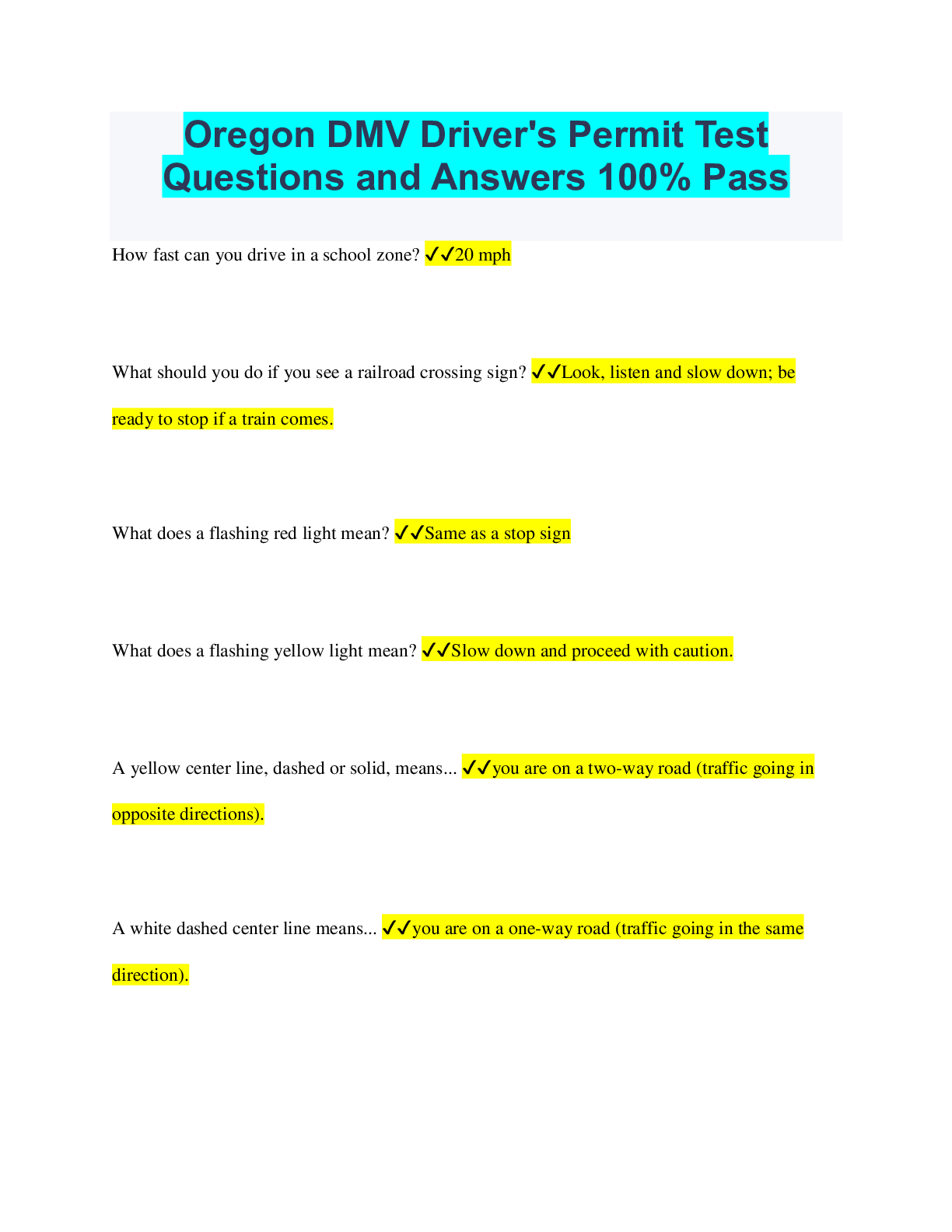
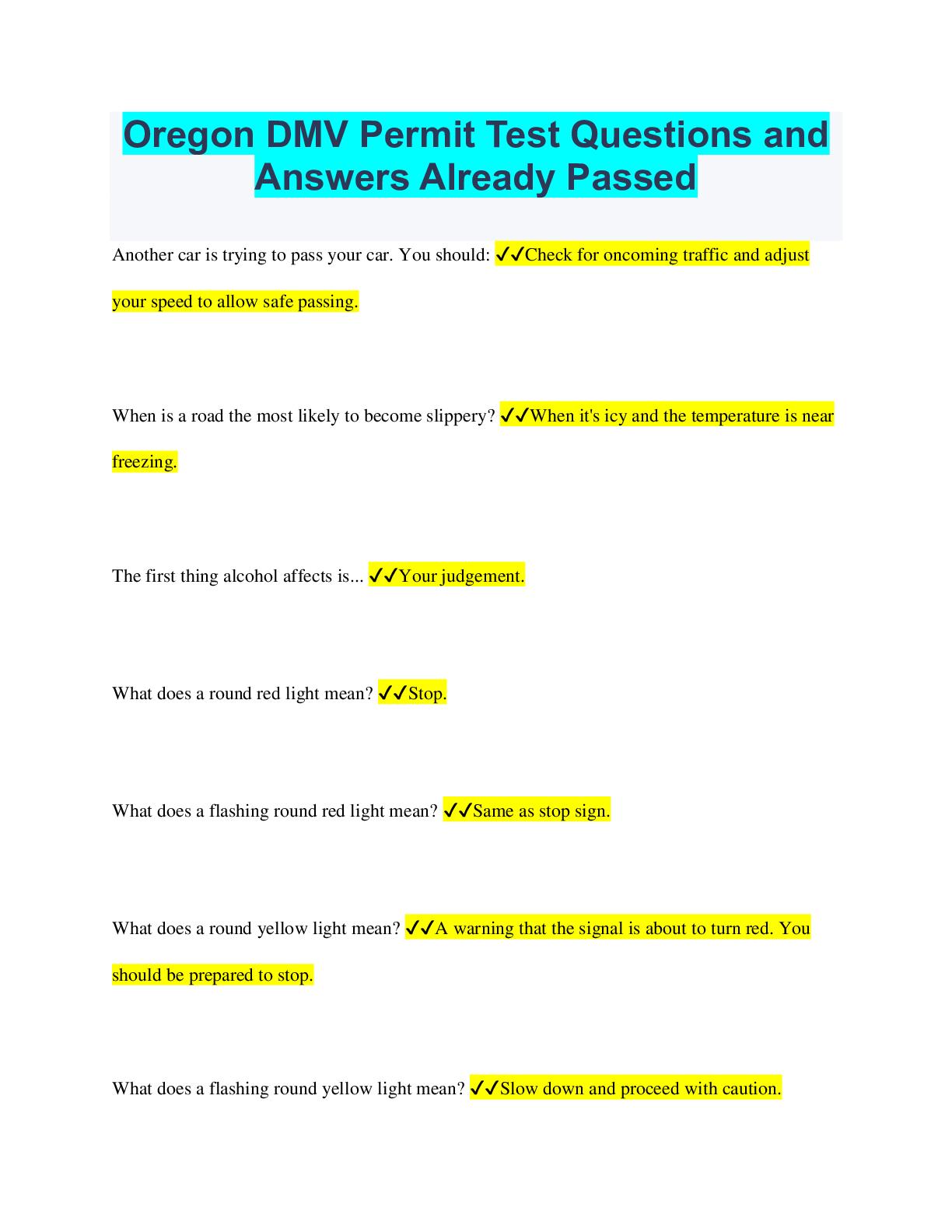
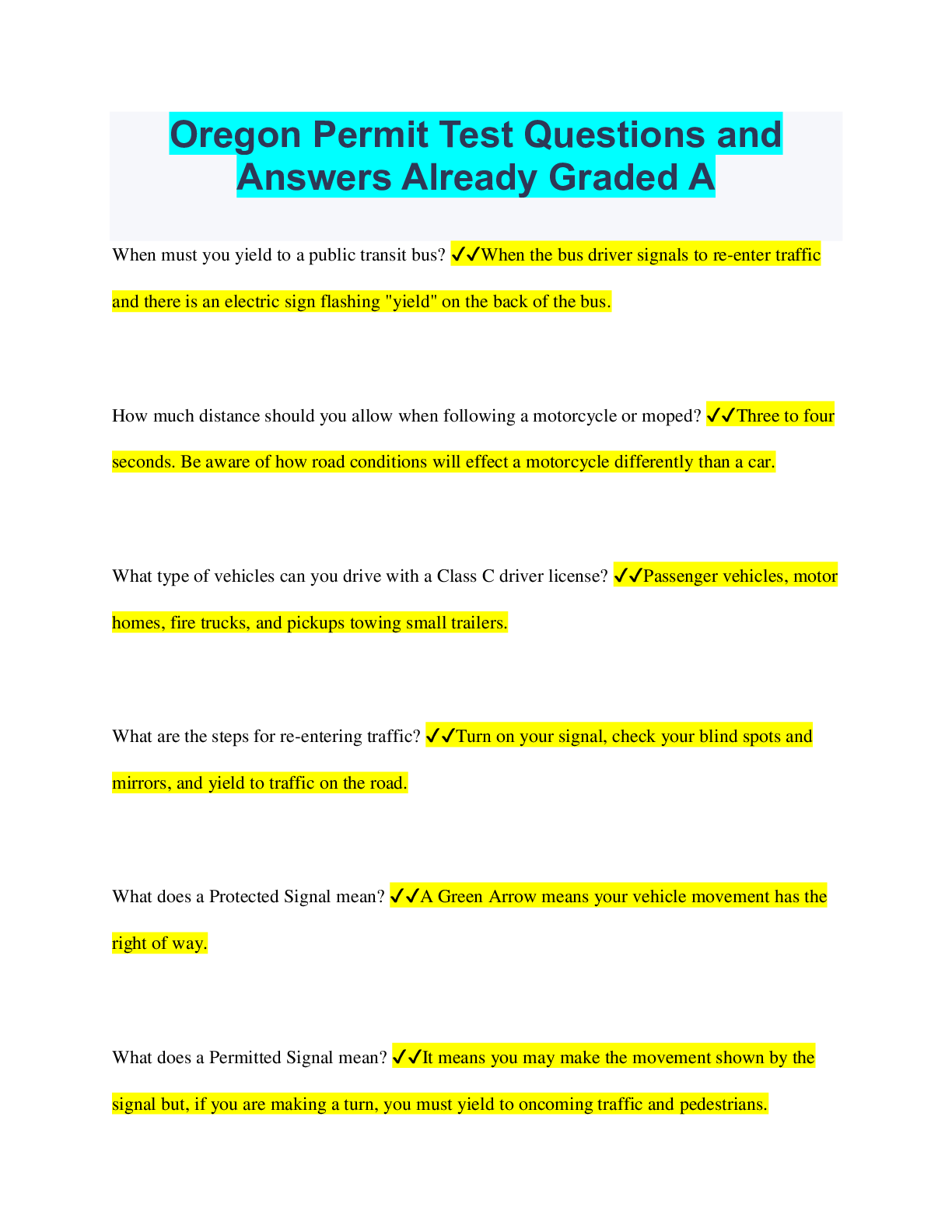
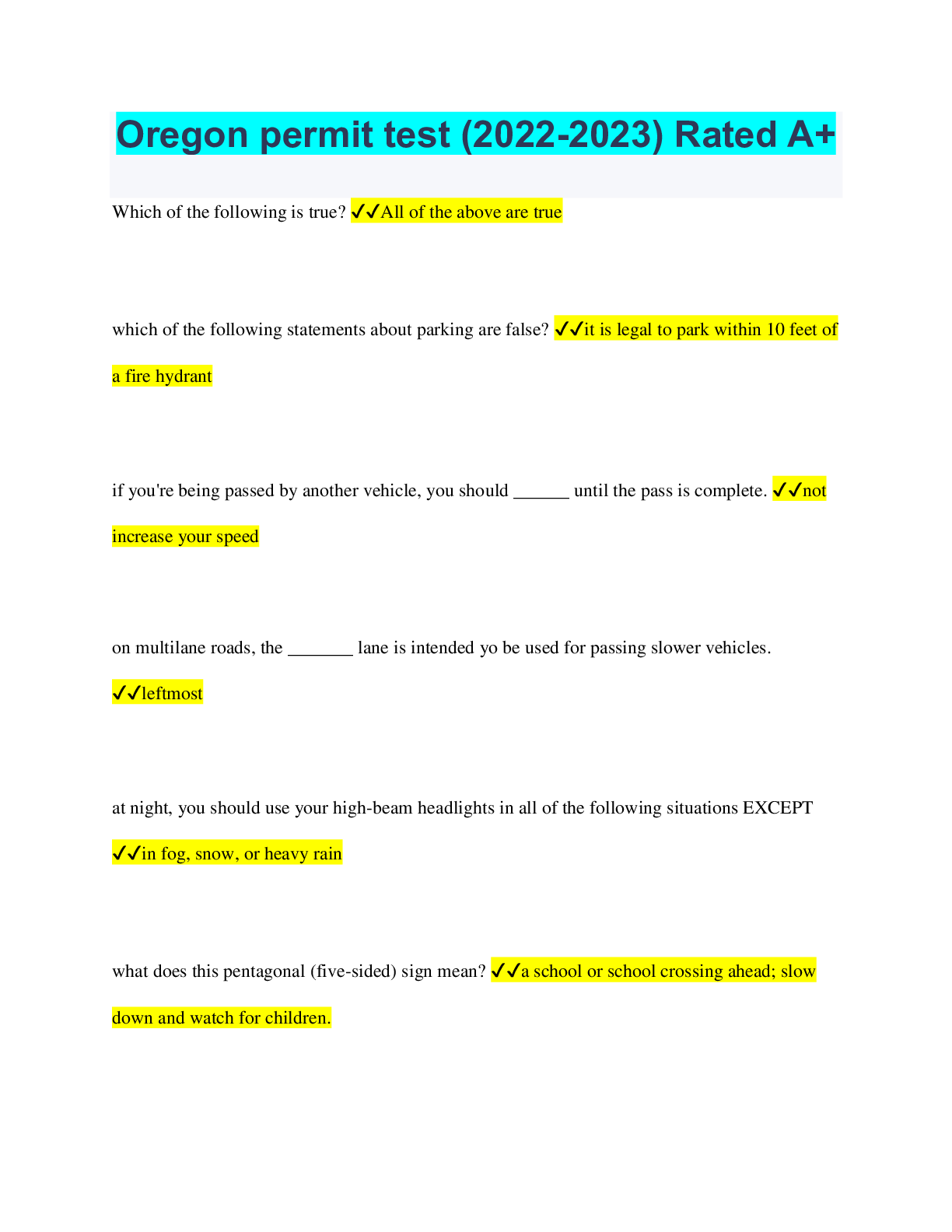
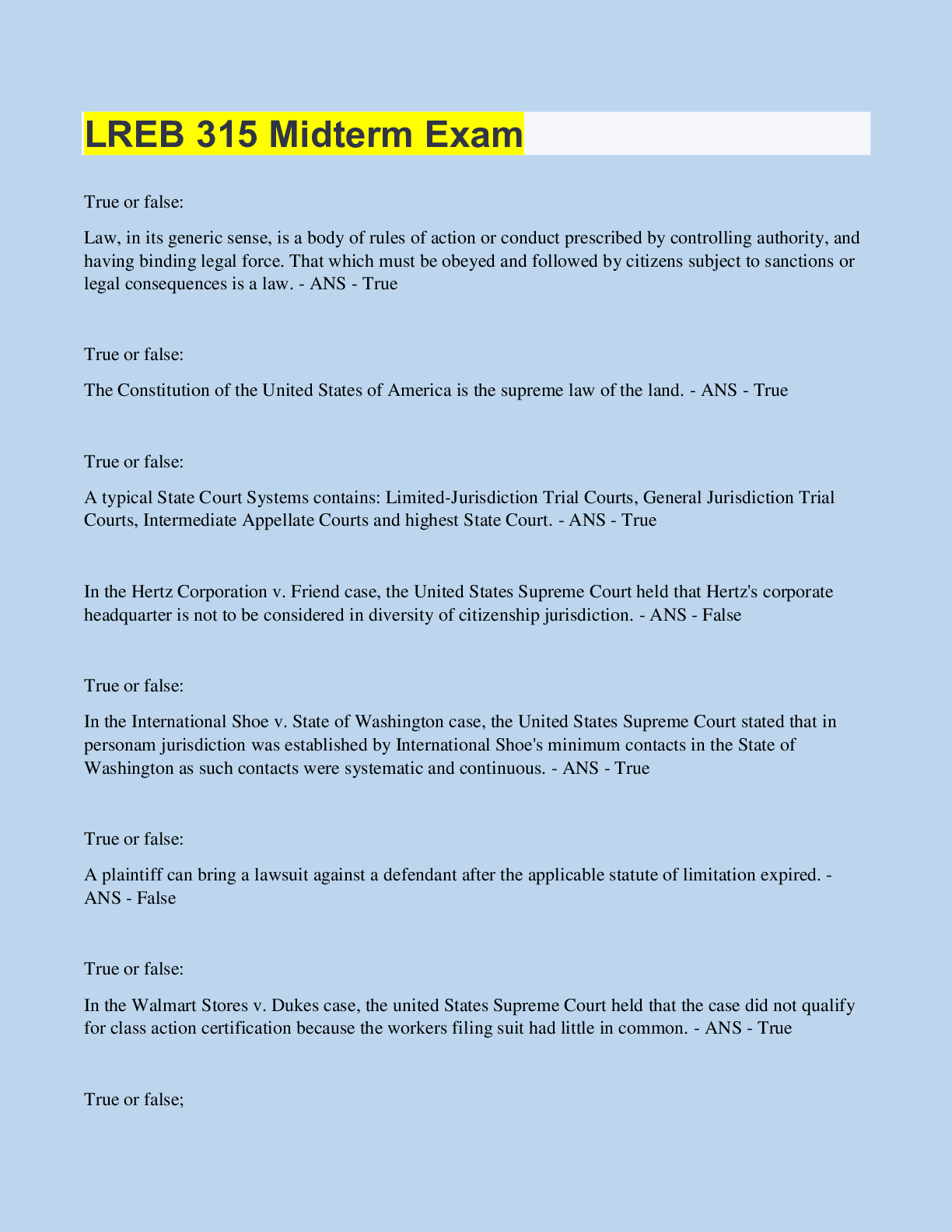
.png)
.png)
.png)
.png)
.png)
.png)
.png)
.png)
.png)
.png)
.png)
.png)

